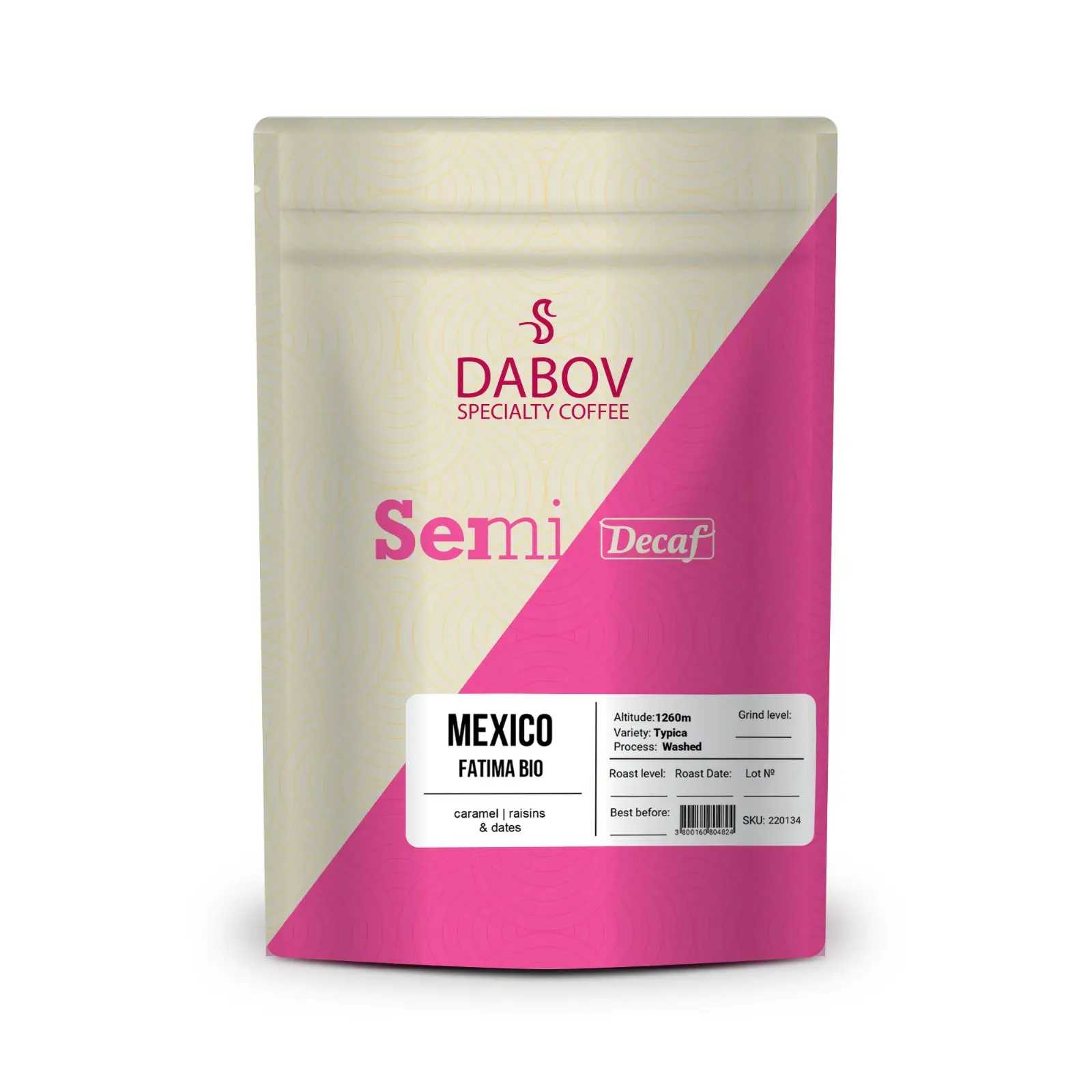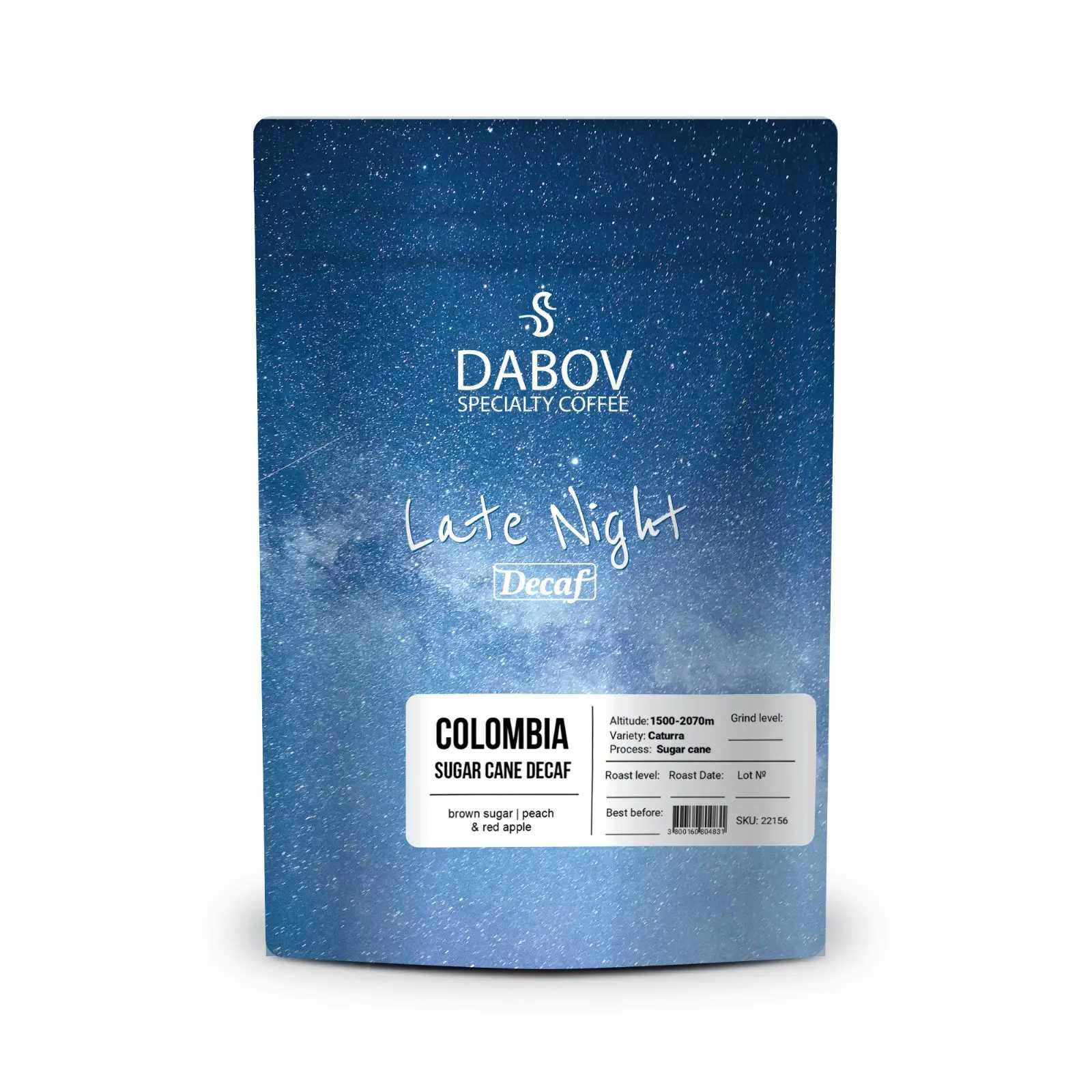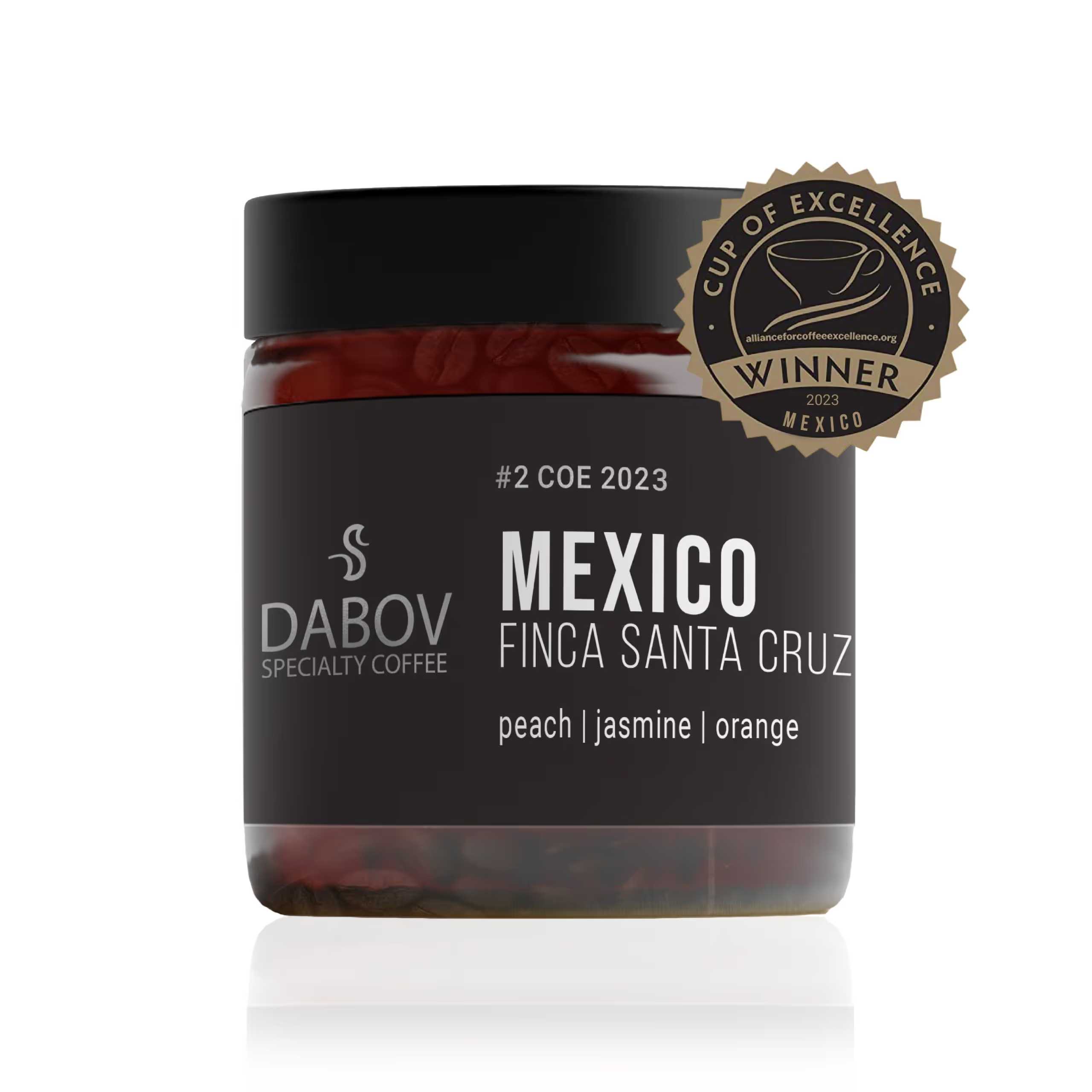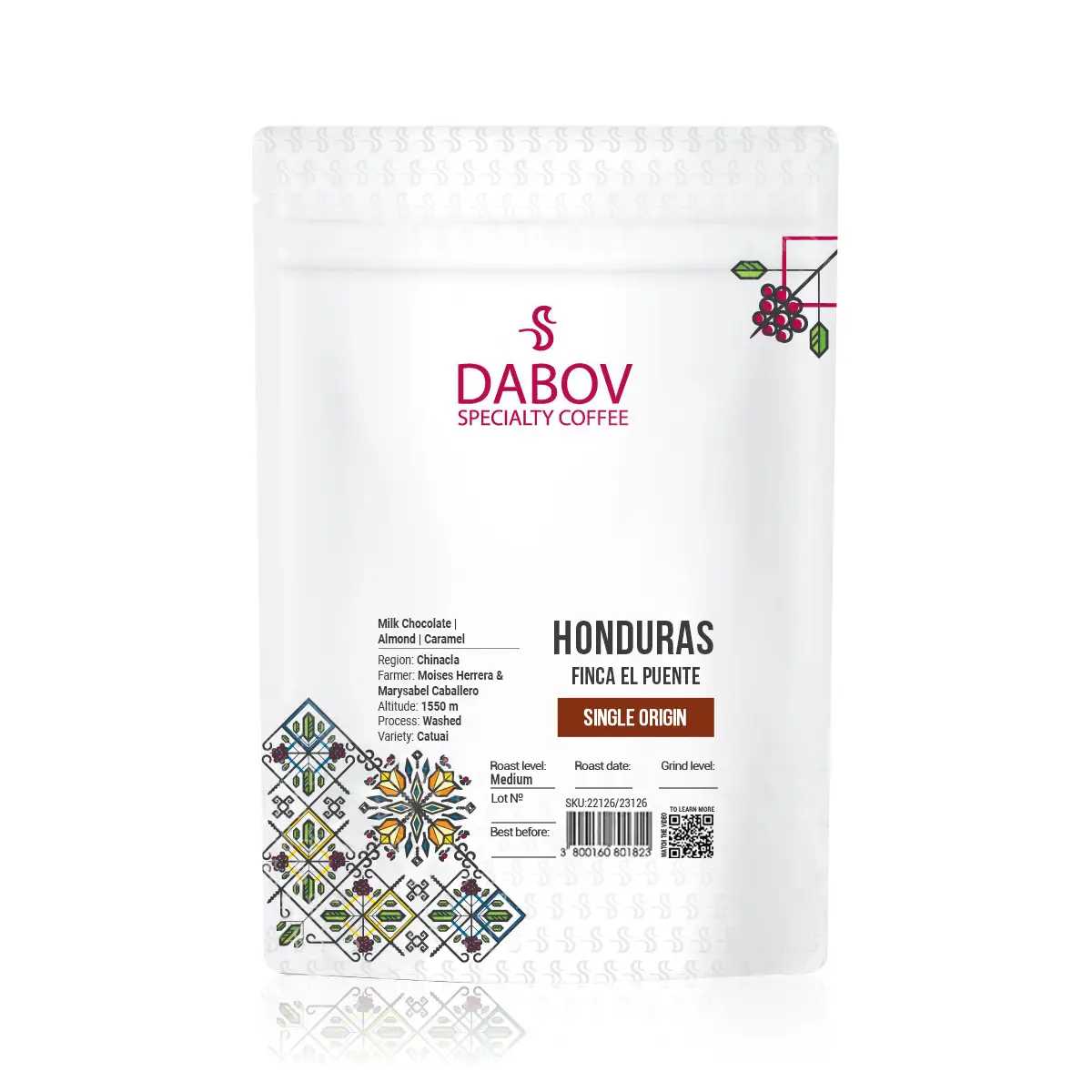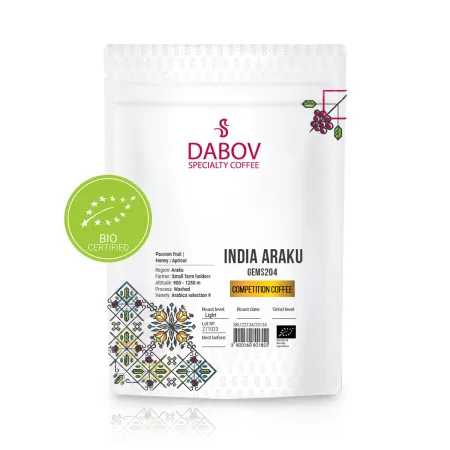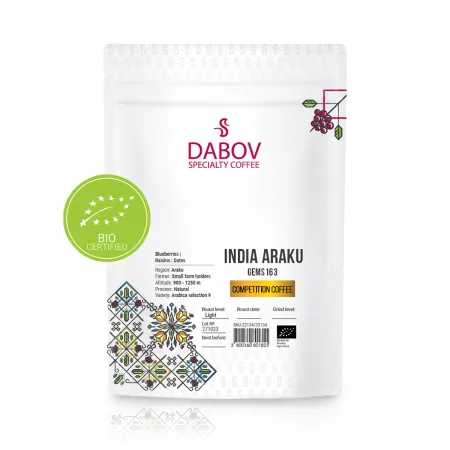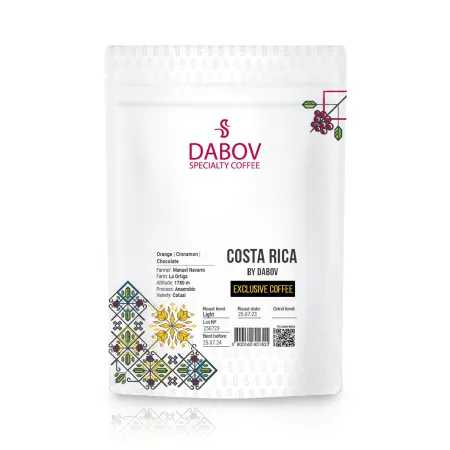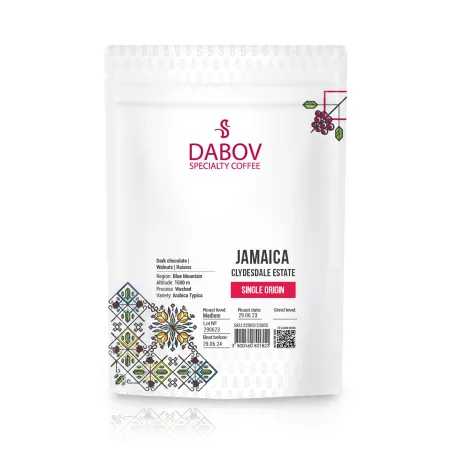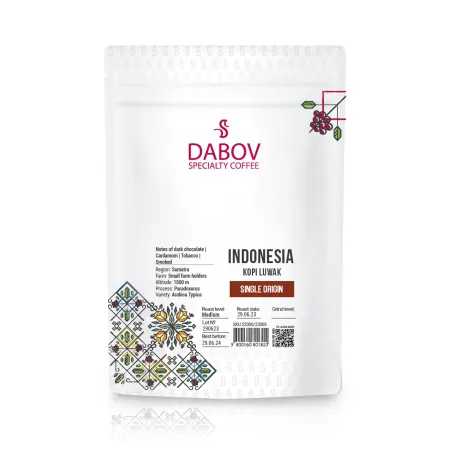The Honey Process Creating Sweet and Complex Coffees
Dive into the fascinating world of honey process coffee, where sweet flavors and complex profiles come alive. This unique coffee processing method is gaining immense popularity among connoisseurs and casual drinkers alike. In this article, we'll explore the intricacies of honey process coffee, from its historical roots in Central America to its vibrant flavor characteristics like caramel and stone fruits. Discover how the honey process differs from washed and natural methods, enriching the taste experience. We’ll also delve into the art of cupping, providing insights on evaluating this distinct coffee. Join us on this aromatic journey and learn why honey process coffee is becoming a must-try for every coffee lover.
Coffee enthusiasts and connoisseurs alike have long been captivated by the intricate world of coffee processing methods. Among these techniques, the honey process has emerged as a fascinating approach that bridges the gap between traditional washed and natural methods, offering a unique flavor profile that tantalizes the taste buds of coffee lovers worldwide. This article delves deep into the realm of honey process coffee, exploring its origins, characteristics, and the artistry behind creating these sweet and complex brews that have taken the specialty coffee world by storm.
1. Understanding Coffee Processing Methods
1.1 Overview of Coffee Processing
Coffee processing is a crucial step in the journey from seed to cup, playing a pivotal role in developing the flavors that we ultimately experience in our brewed coffee. At its core, processing involves the removal of the coffee cherry's outer layers to reveal the precious green bean within. However, the method by which this is accomplished can dramatically alter the final taste profile of the coffee.
The impact of processing on flavor development cannot be overstated. During this stage, various chemical reactions occur within the bean, influenced by factors such as fermentation, drying time, and the presence or absence of the coffee cherry's mucilage. These reactions contribute to the formation of complex sugars, acids, and aromatic compounds that define the coffee's ultimate character. Skilled producers leverage their understanding of these processes to craft coffees with distinct flavor profiles, tailoring their methods to highlight specific attributes of the bean or to cater to particular market preferences.
Moreover, processing methods can accentuate or mute certain inherent qualities of the coffee, such as acidity, body, and sweetness. For instance, a washed process might emphasize the coffee's bright, clean flavors, while a natural process could amplify its fruity notes and full body. The choice of processing method thus becomes a critical decision for producers, as it can significantly influence the marketability and value of their crop.
1.2 Major Coffee Processing Methods
In the world of coffee, three primary processing methods dominate: washed, natural, and honey. Each of these approaches offers a unique set of characteristics and challenges, contributing to the diverse landscape of coffee flavors available to consumers.
The washed process, also known as the wet process, involves removing the coffee cherry's skin and pulp before fermentation and drying. This method typically results in coffees with bright acidity, clean flavors, and a lighter body. Washed coffees often showcase the inherent qualities of the bean and its terroir more clearly, as the removal of the fruit minimizes its influence on the final flavor profile.
In contrast, the natural process, or dry process, involves drying the entire coffee cherry with the bean inside. This method allows the fruit to impart its flavors to the bean during the drying process, often resulting in coffees with pronounced fruity notes, full body, and lower acidity. Natural processed coffees can exhibit complex, wine-like characteristics and are particularly popular in regions with limited water resources.
The honey process, which we will explore in greater depth, sits between these two methods. It involves removing the coffee cherry's skin while leaving varying amounts of mucilage on the bean during drying. This technique allows for a range of flavor profiles, from those closer to washed coffees to those resembling naturals, depending on the amount of mucilage left on the bean.
The differences between these methods significantly impact the final cup profile. Washed coffees tend to have a cleaner, more uniform taste with pronounced acidity and clarity of flavor. Natural coffees often display more intense sweetness, fuller body, and complex fruit notes, sometimes with a slight fermented quality. Honey process coffees can offer a balance between these extremes, potentially combining the clean, bright qualities of washed coffees with some of the sweetness and body associated with naturals.
2. What is Honey Process Coffee?
2.1 Definition and Technique
Honey process coffee represents a unique approach to coffee processing that has gained significant traction in the specialty coffee industry over the past decade. This method involves a careful balance between the washed and natural processes, aiming to capture the best qualities of both while creating a distinct flavor profile all its own.
In the honey process, ripe coffee cherries are harvested and then immediately depulped, removing the outer skin of the fruit. However, unlike in the washed process, a significant portion of the mucilage – the sticky, sugar-rich layer surrounding the bean – is left intact. The amount of mucilage remaining on the bean can vary, leading to different classifications of honey process coffee, such as white honey, yellow honey, red honey, and black honey, with each category representing an increasing amount of mucilage left on the bean.
The term "honey" in coffee processing does not refer to the addition of actual honey to the coffee. Instead, it describes the sticky, honey-like appearance and texture of the mucilage left on the beans during drying. This mucilage is rich in natural sugars and pectin, which play a crucial role in developing the coffee's final flavor profile.
After depulping, the coffee beans with their coating of mucilage are spread out to dry. This drying process is critical and requires careful management. The beans are typically dried on raised beds or patios, often under shade to slow the drying process and allow for more controlled fermentation. Producers must regularly turn the beans to ensure even drying and prevent the development of mold or off-flavors.
The honey process allows for a high degree of control over the final flavor profile of the coffee. By adjusting factors such as the amount of mucilage left on the bean, the drying time, and the environmental conditions during drying, producers can fine-tune the balance of acidity, sweetness, and body in the resulting coffee.
2.2 Historical Context
The honey process, while gaining widespread recognition in recent years, has its roots in Costa Rica and other parts of Central America. The exact origins of this method are somewhat debated, but it is generally believed to have emerged as a practical solution to water scarcity in certain coffee-growing regions.
In the early 2000s, Costa Rican coffee producers began experimenting with leaving varying amounts of mucilage on the bean during processing. This approach allowed them to reduce water usage compared to the traditional washed process while still maintaining some control over fermentation and flavor development. The method quickly gained traction as producers recognized its potential to create unique and desirable flavor profiles.
The rise of the honey process coincided with the growth of the specialty coffee movement, which placed increasing emphasis on unique and high-quality coffees. As consumers became more interested in exploring diverse flavor profiles, the honey process offered a new spectrum of tastes that bridged the gap between washed and natural coffees.
Over the past two decades, the popularity of honey process coffee has soared among both producers and consumers. For producers, it offers a way to differentiate their product in a competitive market and potentially command higher prices for their crop. For consumers, honey process coffees provide an exciting middle ground, offering some of the clarity and brightness associated with washed coffees alongside the sweetness and body typical of naturals.
The honey process has also spread beyond its Central American origins, with producers in South America, Africa, and Asia adopting and adapting the technique to suit their local conditions and coffee varieties. This global adoption has led to further innovations in the method and an even wider range of flavor profiles available to coffee enthusiasts.
3. Characteristics of Honey Process Coffee
3.1 Flavor Profiles
Honey process coffees are renowned for their unique and often complex flavor profiles, which can vary significantly depending on the specific processing techniques employed. One of the most distinctive characteristics of these coffees is their pronounced sweetness, which often manifests in flavors reminiscent of caramel, honey, and various fruits.
The caramel notes in honey process coffees can range from light, buttery caramel to rich, dark caramel bordering on toffee. This sweetness is a result of the sugars in the mucilage being absorbed by the bean during the drying process. The intensity of these caramel flavors often correlates with the amount of mucilage left on the bean, with darker honey processes typically yielding more pronounced caramel notes.
Stone fruit flavors are another common characteristic of honey process coffees. Tasting notes often include references to peach, apricot, and nectarine. These fruity flavors are generally more subtle and integrated than those found in natural processed coffees, offering a balanced sweetness that complements rather than overwhelms the coffee's other attributes.
The honey-like sweetness that gives this process its name is indeed present in many honey process coffees. This sweetness is often described as having a smooth, lingering quality that enhances the coffee's overall flavor profile. It's important to note that this honey flavor is not added but is a natural result of the processing method.
Beyond these common flavor notes, honey process coffees can exhibit a wide range of other characteristics depending on factors such as the coffee variety, growing conditions, and specific processing techniques. Some coffees might display notes of tropical fruits like mango or papaya, while others might lean towards berry flavors or even floral notes.
The complexity of honey process coffees is one of their most appealing attributes. These coffees often offer a layered taste experience, with different flavors revealing themselves as the coffee cools. For example, a coffee might initially present with bright citrus notes, followed by a caramel sweetness, and finally settling into a lingering honey aftertaste.
3.2 Factors Influencing Flavor Development
The development of flavor in honey process coffee is influenced by a complex interplay of factors, each contributing to the final taste profile. Understanding these factors is crucial for both producers aiming to create specific flavor profiles and consumers seeking to appreciate the nuances of these coffees.
The selection of coffee beans plays a fundamental role in flavor development. Different coffee varieties have inherent flavor characteristics that can be enhanced or altered through the honey process. For example, some varieties might have natural fruit notes that are amplified by the honey process, while others might develop more pronounced sweetness or body.
Climate and growing conditions significantly impact the development of flavors in honey process coffee. Factors such as altitude, soil composition, and rainfall can all influence the bean's inherent characteristics. Higher altitude coffees, for instance, often have higher acidity and more complex flavor profiles, which can be further enhanced through honey processing.
The specific conditions during processing are perhaps the most critical factors in determining the final flavor profile of honey process coffee. The amount of mucilage left on the bean is a key variable. White honey process, where most of the mucilage is removed, typically results in coffees with higher acidity and cleaner flavors. In contrast, black honey process, where nearly all the mucilage is left intact, often produces coffees with intense sweetness, full body, and complex fruit notes.
The drying process itself is another crucial factor. The rate of drying can significantly impact flavor development, with slower drying generally allowing for more complex flavor development. Factors such as temperature, humidity, and air circulation during drying all play a role. Many producers use shade-drying techniques to slow down the process and allow for more controlled fermentation.
The level of ripeness of the coffee cherries at harvest can also influence the final flavor. Fully ripe cherries typically have higher sugar content, which can translate to sweeter, more complex flavors in the cup.
Finally, the expertise of the producer in managing all these variables is paramount. Skilled producers can adjust their techniques based on the specific characteristics of their crop and the desired flavor profile, creating coffees that showcase the best attributes of both the bean and the processing method.
4. Comparing Honey Process with Other Processing Methods
4.1 Honey vs. Washed Coffee
The comparison between honey process and washed coffee reveals significant differences in flavor profiles, body, and overall cup characteristics. These differences stem from the fundamental variations in processing techniques and their impact on the coffee bean's development.
Washed coffees are known for their clean, bright flavors and pronounced acidity. The washing process removes all of the coffee cherry's fruit material before drying, allowing the inherent characteristics of the bean to shine through more clearly. This often results in coffees with distinct flavor notes, crisp acidity, and a lighter body. Washed coffees typically showcase the terroir – the environmental factors affecting the crop – more prominently, making them popular choices for single-origin offerings.
In contrast, honey process coffees often exhibit a more rounded acidity and fuller body compared to their washed counterparts. The presence of mucilage during drying imparts additional sweetness and complexity to the coffee. This can result in a smoother, more balanced cup with a wider range of flavor notes. While honey process coffees can still display bright, acidic qualities, these are often tempered by the added sweetness and body resulting from the mucilage.
The clarity of flavor in washed coffees is often praised by coffee professionals for its ability to highlight subtle taste differences between varieties and origins. Honey process coffees, while potentially less "clear" in this sense, offer a different kind of complexity. They can present a more integrated flavor profile where various taste elements intertwine to create a harmonious whole.
These differences cater to varying preferences among coffee drinkers. Those who appreciate bright, clean flavors and distinct acidity might gravitate towards washed coffees. On the other hand, consumers who enjoy a fuller body, pronounced sweetness, and a more complex flavor profile might find honey process coffees more appealing.
It's worth noting that the spectrum of honey process coffees – from white honey to black honey – offers a range of profiles that can bridge the gap between washed and natural coffees. This versatility allows producers to create coffees that might appeal to fans of both washed and natural processes, potentially broadening their market appeal.
4.2 Honey vs. Natural Coffee
The comparison between honey process and natural (dry) process coffees reveals another set of interesting contrasts, particularly in terms of sweetness, fruitiness, and overall flavor intensity.
Natural process coffees are renowned for their intense sweetness and prominent fruit flavors. In this method, the entire coffee cherry is dried with the bean inside, allowing for maximum flavor transfer from the fruit to the bean. This often results in coffees with bold, sometimes wine-like fruit notes, heavy body, and lower acidity compared to washed coffees. Natural process coffees can also exhibit fermented flavors, which some coffee lovers appreciate for their complexity and uniqueness.
Honey process coffees, while also known for their sweetness, typically present a more balanced flavor profile compared to naturals. The partial removal of the coffee cherry in honey processing allows for some of the fruity flavors to develop, but usually to a lesser extent than in natural coffees. This can result in a cup that offers some of the sweetness and body of a natural coffee, but with more clarity and a wider range of flavor notes.
The fruitiness in honey process coffees tends to be more subtle and integrated compared to the sometimes overwhelming fruit flavors found in naturals. While a natural process coffee might taste distinctly of blueberries or strawberries, a honey process coffee might offer more nuanced fruit notes alongside other flavors like caramel or nuts.
In terms of consistency, honey process coffees often offer more predictability than naturals. Natural processing can be challenging to control, sometimes resulting in inconsistent batches or off-flavors if not managed carefully. The honey process, while still requiring skill and attention, generally allows for more control over the final product.
The choice between honey and natural coffees often comes down to personal preference and the specific flavor experience a consumer is seeking. Those who enjoy bold, fruit-forward coffees with intense sweetness might gravitate towards naturals. Coffee drinkers who appreciate sweetness and body but also value balance and clarity might find honey process coffees more to their liking.
It's also worth noting that both honey and natural processes can showcase the unique characteristics of specific coffee varieties and origins, albeit in different ways. Natural processing tends to amplify the inherent fruity notes of a coffee, while honey processing can bring out more subtle flavor nuances while still maintaining some of the coffee's natural sweetness.
5. The Art of Cupping Honey Process Coffee
5.1 Cupping Techniques
Cupping is a standardized method used by coffee professionals to evaluate and compare the quality, flavor profile, and characteristics of different coffees. When it comes to honey process coffees, the cupping process requires attention to specific attributes that set these coffees apart from their washed or natural counterparts.
The cupping process for honey process coffees follows the general guidelines set by the Specialty Coffee Association (SCA), but with a keen focus on the unique attributes of this processing method. The process typically begins with the visual and aromatic evaluation of the dry grounds. For honey process coffees, cuppers might notice a slightly darker color compared to washed coffees of the same roast level, due to the caramelization of sugars during processing.
Once hot water is added to the grounds, the wet aroma is assessed. Honey process coffees often exhibit a sweet, sometimes fruity aroma at this stage. As the coffee steeps, a crust forms on the surface. Breaking this crust and inhaling the released aromas is a crucial step in evaluating the coffee's aromatic profile.
After allowing the coffee to cool slightly, tasting begins. Cuppers use spoons to slurp the coffee, spraying it across their palates to fully experience its flavors and aromas. For honey process coffees, cuppers pay particular attention to the balance between acidity, sweetness, and body – key attributes that are significantly influenced by this processing method.
During the tasting, cuppers evaluate various aspects of the coffee:
- Fragrance/Aroma: The smell of the dry and wet grounds, as well as the brewed coffee.
- Flavor: The overall taste experience, including any specific flavor notes detected.
- Aftertaste: The length and quality of the flavor that lingers after swallowing.
- Acidity: The bright, tangy quality of the coffee, which can range from subtle to pronounced in honey process coffees.
- Body: The weight and texture of the coffee in the mouth, often fuller in honey process coffees compared to washed coffees.
- Balance: How well the different elements (acidity, sweetness, body) work together.
- Sweetness: A key attribute in honey process coffees, often manifesting as caramel or honey-like flavors.
- Clean Cup: The lack of interfering flavors or off-notes.
- Uniformity: Consistency across multiple cups of the same coffee.
- Overall: The cupper's holistic appreciation of the coffee.
5.2 Understanding Sweetness and Complexity
When cupping honey process coffees, understanding and appreciating their unique sweetness and complexity is crucial. These coffees often present a different sweetness profile compared to washed or natural coffees, and their complexity can be more nuanced and layered.
The sweetness in honey process coffees is typically more pronounced than in washed coffees but more integrated than in naturals. Cuppers often describe this sweetness as reminiscent of caramel, honey, or brown sugar. It's important to note how this sweetness interacts with the coffee's acidity and other flavor notes. In well-processed honey coffees, the sweetness should enhance and complement other flavors rather than overwhelm them.
Complexity in honey process coffees often manifests as a progression of flavors as the coffee cools. Initially, one might taste brighter, more acidic notes, followed by the emergence of sweeter, caramel-like flavors, and finally, lingering fruity or nutty undertones. Cuppers pay close attention to this evolution of flavors, as it's a hallmark of high-quality honey process coffees.
The body of honey process coffees is another crucial element to assess during cupping. These coffees typically have a fuller, more syrupy mouthfeel compared to washed coffees. Cuppers evaluate how this body complements the flavor profile and contributes to the overall balance of the cup.
When evaluating complexity, cuppers also consider the clarity of flavors. While honey process coffees may not have the same bright clarity as washed coffees, they should still present distinct, identifiable flavor notes. The challenge and art lie in discerning these flavors within the coffee's fuller, sweeter profile.
Professionals and enthusiasts alike can use cupping to develop a deeper appreciation for the nuances of honey process coffees. By focusing on the interplay between sweetness, acidity, body, and specific flavor notes, one can begin to distinguish the subtle differences between various honey process coffees and understand how factors like the amount of mucilage left on the bean during processing affect the final cup profile.
Regular practice and comparison with other processing methods can help develop the palate and appreciation for the unique qualities of honey process coffees. This understanding not only enhances the enjoyment of these coffees but also aids in selecting and brewing them to best showcase their distinctive characteristics.
6. Popular Regions and Varieties of Honey Process Coffee
6.1 Notable Coffee-Growing Regions
While the honey process has gained popularity worldwide, certain regions have become particularly renowned for their expertise in this method. These areas have not only embraced the technique but have also adapted it to suit their specific coffee varieties and growing conditions.
Costa Rica stands out as a pioneer in honey process coffee. The country's coffee industry has been at the forefront of developing and refining this method. Regions like Tarrazú, West Valley, and Central Valley are known for producing exceptional honey process coffees. Costa Rican producers have been instrumental in popularizing different levels of honey processing, from white to black honey.
Brazil, the world's largest coffee producer, has also made significant strides in honey process coffee production. Regions such as Minas Gerais and São Paulo have adapted the technique to suit their large-scale production methods. Brazilian honey process coffees often exhibit nutty and chocolate notes alongside the characteristic sweetness.
El Salvador has embraced the honey process as a way to differentiate its coffees in the specialty market. Regions like Santa Ana and Usulután are producing honey process coffees that showcase the country's unique coffee varieties, such as Pacamara and Bourbon.
In recent years, other countries have also begun to make their mark in honey process coffee production. For instance:
- Colombia: Known for its washed coffees, some Colombian producers are now experimenting with honey processing, particularly in regions like Huila and Nariño.
- Guatemala: Producers in regions like Antigua and Huehuetenango are using the honey process to create unique flavor profiles from their high-altitude grown coffees.
- Honduras: The country has seen a rise in honey process coffees, particularly from regions like Copán and Santa Barbara.
- Ethiopia: While primarily known for its natural process coffees, some Ethiopian producers are exploring honey processing, particularly with heirloom varieties.
Traditional farming practices in these regions often involve shade-grown coffee, which complements the honey process well. Shade-growing slows the maturation of coffee cherries, allowing for more complex flavor development. This practice, combined with the controlled fermentation of the honey process, can result in coffees with exceptional depth and complexity.
Contemporary farming practices in honey process production often focus on precision and control. Many producers use raised drying beds to ensure even air circulation during the crucial drying phase. Some are also experimenting with controlled environments, using greenhouses or mechanical dryers to manage humidity and temperature more precisely.
6.2 Coffee Varietals Best Suited for Honey Processing
While the honey process can be applied to any coffee variety, certain varietals have shown particular promise in developing exceptional flavor profiles through this method. The interaction between the coffee's genetic characteristics and the honey process can result in unique and desirable taste experiences.
Bourbon: This classic variety, known for its sweet and complex flavor profile, responds exceptionally well to honey processing. The process tends to enhance Bourbon's inherent sweetness while maintaining its balanced acidity. Honey processed Bourbons often exhibit notes of caramel, red fruits, and a smooth, creamy body.
Caturra: A natural mutation of Bourbon, Caturra also performs well with honey processing. The process can help to round out Caturra's sometimes sharp acidity, resulting in a more balanced cup with pronounced sweetness and often notes of stone fruits and nuts.
Pacamara: This variety, a cross between Pacas and Maragogipe, is known for its large bean size and complex flavor profile. Honey processing can accentuate Pacamara's floral notes and add a layer of sweetness that complements its natural complexity. Honey processed Pacamaras often display a syrupy body with flavors ranging from tropical fruits to dark chocolate.
Gesha/Geisha: While rare and expensive, Gesha coffees processed using the honey method can be truly exceptional. The process tends to enhance Gesha's floral and tea-like qualities while adding a layer of sweetness and body that can make these coffees even more complex and appealing.
SL28 and SL34: These Kenyan varieties, known for their bright acidity and complex flavor profiles, can develop interesting characteristics when honey processed. The method can add body and sweetness to balance their natural acidity, resulting in coffees with a harmonious blend of fruity and sweet notes.
Typica: One of the oldest coffee varieties, Typica responds well to honey processing. The process can enhance its mild sweetness and add complexity to its flavor profile, often resulting in coffees with notes of chocolate, nuts, and subtle fruits.
Catuai: This high-yielding variety, popular in Brazil and Central America, can produce excellent results with honey processing. The method tends to enhance Catuai's natural sweetness and can add depth to its sometimes straightforward flavor profile.
It's important to note that the success of honey processing with these varietals also depends on factors such as growing conditions, altitude, and the specific techniques used during processing. Skilled producers often experiment with different varieties and processing methods to find the combinations that best showcase their coffee's unique characteristics.
Furthermore, as the specialty coffee industry continues to evolve, new and rediscovered varieties are constantly being tested with various processing methods, including honey processing. This ongoing experimentation contributes to the dynamic and ever-changing landscape of specialty coffee, offering coffee enthusiasts an ever-expanding range of flavor experiences to explore.
7. The Future of Honey Process Coffee
7.1 Trends in Specialty Coffee
The specialty coffee industry is continuously evolving, and honey process coffee plays a significant role in shaping current and future trends. As consumers become more knowledgeable and discerning about their coffee choices, the demand for unique and high-quality coffees continues to grow.
One notable trend is the increasing appreciation for process-driven coffees. Consumers are showing more interest in understanding how their coffee is produced, from farm to cup. This curiosity has led to a greater demand for coffees with distinct processing methods, with honey process coffees often taking center stage due to their unique flavor profiles.
Transparency in coffee production is another growing trend that aligns well with honey process coffees. Many roasters and cafes are now providing detailed information about the coffee's origin, variety, and processing method. This trend benefits honey process coffees, as their unique production method becomes a selling point and a topic of interest for consumers.
The rise of micro-lots and experimental batches is also influencing the honey process coffee market. Producers are increasingly willing to process small batches of coffee using various honey process techniques, creating limited edition coffees that appeal to enthusiasts and collectors. These micro-lots often command premium prices and help to elevate the overall perception of a producer's or region's coffee quality.
In terms of flavor preferences, there's a growing appreciation for coffees that balance sweetness, acidity, and complexity – attributes that honey process coffees often excel in delivering. This trend is reflected in the increasing popularity of honey process coffees in barista competitions and specialty coffee shops worldwide.
Sustainability is another crucial trend impacting the coffee industry, including honey process production. The reduced water usage in honey processing compared to the washed method aligns well with environmentally conscious practices. As sustainability becomes more critical to consumers, this aspect of honey processing may become an additional selling point.
The growth of the home brewing market, accelerated by recent global events, has also influenced the honey process coffee trend. As more consumers invest in quality brewing equipment for home use, there's an increased demand for coffees that offer unique and complex flavor experiences – a niche that honey process coffees can readily fill.
Artisanal roasting practices have evolved to better showcase the unique characteristics of honey process coffees. Roasters are developing profiles that highlight the sweetness and complexity of these coffees without overshadowing their delicate flavor notes. This trend towards precision roasting is likely to continue, further elevating the quality and consistency of honey process coffees available to consumers.
7.2 Challenges and Opportunities
While the future of honey process coffee looks promising, it's not without its challenges. However, these challenges also present opportunities for innovation and growth in the industry.
One significant challenge is climate change, which affects coffee production worldwide. Changing weather patterns can impact the delicate balance required for successful honey processing. Unpredictable rainfall or humidity levels can make it difficult to achieve consistent results. However, this challenge also presents an opportunity for producers to innovate and develop more resilient processing techniques. Some are experimenting with climate-controlled drying facilities or adjusting their processing schedules to adapt to changing conditions.
Market demands pose another challenge. As honey process coffees gain popularity, there's a risk of overproduction or a decline in quality as producers rush to meet demand. The opportunity here lies in education and quality control. Industry leaders can work to establish and promote best practices for honey processing, ensuring that quality remains high even as production increases.
There's also the challenge of consumer education. While interest in specialty coffee is growing, many consumers are still unfamiliar with different processing methods and their impact on flavor. This presents an excellent opportunity for roasters, cafes, and coffee educators to engage with consumers, sharing knowledge about honey process coffees and helping to develop more informed and appreciative coffee drinkers.
Pricing and accessibility present both a challenge and an opportunity. Honey process coffees often command higher prices due to the labor-intensive nature of the process and their unique flavor profiles. While this can be a barrier for some consumers, it also presents an opportunity for producers to invest in quality and sustainability, potentially leading to even better coffees and more stable livelihoods for coffee farmers.
In terms of flavor innovation, there's still much to explore with honey process coffees. Producers and roasters have the opportunity to experiment with different varieties, fermentation techniques, and even blending different honey process coffees to create new and exciting flavor profiles.
Sustainability remains both a challenge and an opportunity. While honey processing generally uses less water than washed processing, there's still room for improvement in terms of overall environmental impact. Innovations in water recycling, energy-efficient drying methods, and organic waste management could make honey processing even more sustainable.
Lastly, there's the opportunity to further integrate technology into honey processing. From precision fermentation control to AI-assisted quality grading, technological advancements could help producers achieve more consistent results and potentially scale up production without sacrificing quality.
Conclusion
The honey process stands as a testament to the coffee industry's continuous innovation and pursuit of exceptional flavors. This unique method, bridging the gap between washed and natural processes, has opened up a new world of taste experiences for coffee enthusiasts and professionals alike. By leaving varying amounts of mucilage on the bean during drying, producers can create coffees with distinctive sweetness, complex flavor profiles, and a range of body and acidity levels that set them apart in the specialty coffee market.
Throughout this exploration, we've seen how honey process coffees are characterized by their pronounced sweetness, often reminiscent of caramel, honey, and various fruits. The complexity of these coffees, with their layered flavor profiles and evolving taste experiences, offers a unique journey for the palate. We've also examined how factors such as coffee variety, growing conditions, and specific processing techniques all play crucial roles in determining the final cup profile.
The comparison with other processing methods highlighted how honey process coffees can offer a middle ground between the clean, bright flavors of washed coffees and the intense fruitiness of naturals. This versatility makes honey process coffees appealing to a wide range of coffee drinkers and provides producers with a valuable tool for creating distinctive and marketable coffees.
The art of cupping honey process coffees revealed the importance of understanding and appreciating their unique attributes. From evaluating their distinctive sweetness to exploring their complex flavor layers, cupping these coffees requires a nuanced approach that can lead to a deeper appreciation of their qualities.
Looking at popular regions and varieties for honey processing, we've seen how this method has been embraced and adapted in various coffee-growing areas around the world. From its origins in Central America to its adoption in countries like Brazil, Colombia, and even parts of Africa, honey processing has proven its ability to showcase the unique characteristics of different coffee varieties and terroirs.
As we look to the future, honey process coffee continues to play a significant role in shaping trends within the specialty coffee industry. The growing consumer interest in unique and transparent coffee experiences aligns well with what honey process coffees have to offer. However, challenges such as climate change and market demands will require ongoing innovation and adaptation from producers and industry professionals.
For coffee enthusiasts looking to explore diverse flavors, honey process coffees offer an exciting avenue for discovery. These coffees provide a unique tasting experience that can broaden one's appreciation for the vast world of coffee flavors. Whether you're a seasoned coffee professional or a curious consumer, exploring honey process coffees can lead to new and delightful taste experiences.
Call to Action
We encourage readers to embark on their own journey of discovery with honey process coffees. Here are some ways to dive deeper into this fascinating world:
- Explore Local Roasters: Visit local specialty coffee roasters and inquire about their honey process offerings. Many roasters are eager to share their knowledge and may even offer cupping sessions or brewing demonstrations.
- Experiment with Brewing: Try brewing honey process coffees using different methods such as pour-over, French press, or espresso. Each method can highlight different aspects of the coffee's flavor profile.
- Compare Processing Methods: Purchase honey process, washed, and natural coffees from the same region or producer. Tasting them side by side can help you appreciate the unique characteristics of each processing method.
- Share Your Experiences: Join online coffee communities or local coffee meetups to share your experiences with honey process coffees. Engaging with other enthusiasts can provide new insights and recommendations.
- Support Sustainable Practices: Look for honey process coffees from producers who prioritize sustainable and ethical practices. Your choices can help support positive change in the coffee industry.
- Stay Informed: Subscribe to specialty coffee publications, blogs, or newsletters to stay updated on the latest trends, techniques, and offerings in the world of honey process coffee.
By actively engaging with and exploring honey process coffees, you not only enhance your own coffee experience but also contribute to the growth and development of this exciting sector of the specialty coffee industry. Happy brewing and tasting!



